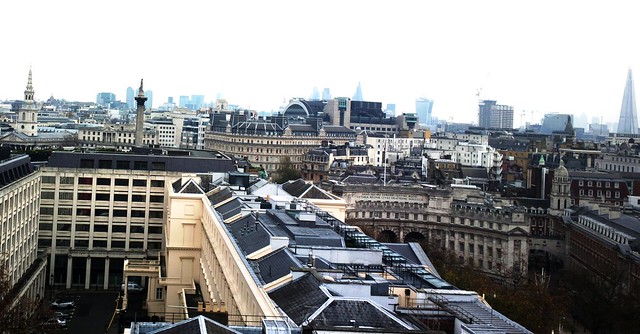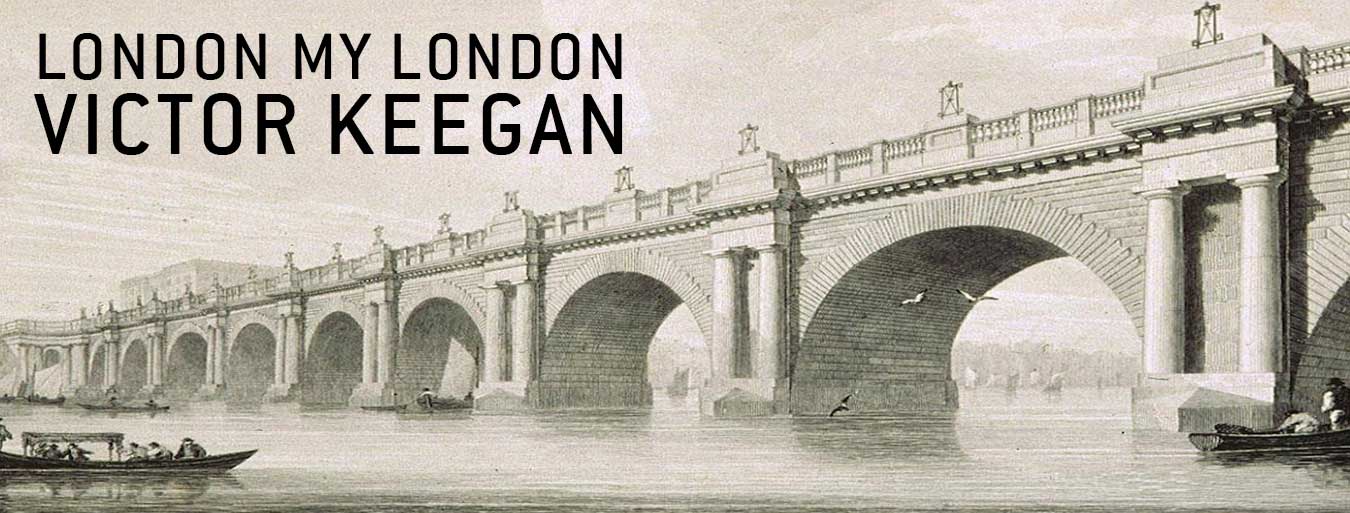
Towards Trafalgar Square – with the British Council in between
Augustus J C Hare was not a fan of Trafalgar Square. Writing in 1896 he found a “dreary expanse of granite” with the “miserable buildings” of the National Gallery flanked by a “hideous hotel and a frightful club”. Nelson’s Column was “a very poor work, which, however, does not signify much as it can only be properly seen from the top of the Duke of York’s column which no one ascends”.
Almost 120 years later, it still remains true that no one is allowed to ascend the Duke of York’s column. But reading Augustus Hare aroused a long held curiosity which promoted me to seek permission to climb it. And today it happened. Accompanied by two very helpful people from the Royal Parks I climbed the 168 odd Aberdeen Granite steps, torch in hand, dodging pigeon droppings and the odd egg on the way before being hit by a mesmerising, panoramic view of London I’d never seen before. I looked immediately at Nelson’s Column only to find that what would have been Augustus J C Hare’s untrammelled view of Trafalgar Square and St Martin-in-the-Fields was partially obscured by that Johnny-come-lately, the British Council HQ. However, with a little imagination, one can remove the barrier and see what Hare intended us to see. This apart, the platform reveals an unfolding panorama rarely seen from the west of the Capital even though clouds obscured the Surrey hills which can be seen on a fine day (like yesterday?).

Towards St James Park
I love the brazen majesty of the Duke’s column and always pause to admire when I pass by (Reality Check – it rates 1,678 of 1,788 Attractions in London on Trip Advisor) but it is something of a mystery why the Duke (1674 – 1728) was accorded such a personal monument. He was appointed Commander in Chief of the Army by his doting father, George 111, but failures on the field of battle in France and Holland made him widely regarded as unfit to command an army in the field. He was a notorious philanderer and gambler with the dubious honour of being satirised in the famous nursery rhyme:
“Oh, the grand old Duke of York, he had 10,000 men:
He marched them up to the top of the hill,
And he marched them down again.”
When he died he left debts of £401,169 – tens of millions at today’s prices – leaving some to suppose that he was put on top of a column to dodge his creditors. However, he did leave a lasting legacy for which the nation was grateful by reducing corruption in the granting of army commissions (though this didn’t stop his mistress earning a bob or two that way) and established a military college that became Sandhurst. The column – built from Aberdeen granite and, appropriately, York stone -was paid for by soldiers in the army donating a day’s pay worth £25,000 (by conscription rather than subscription, one presumes) for its construction from 1830 to 1833.
The public used to be able to climb to the top from 12pm to 4pm, from May to Sept for 6d until a spate of suicides led to its closure in the late 18th century. On a clear day you can see for miles. Thst didn’t happen today but the vista is firmly imprinted in my mind – except for the interfering British Council.
Sign up for occasional updates in the box on the right. Follow me on Twitter @vickeegan

The view towards Regent Street and he Post Office Tower
